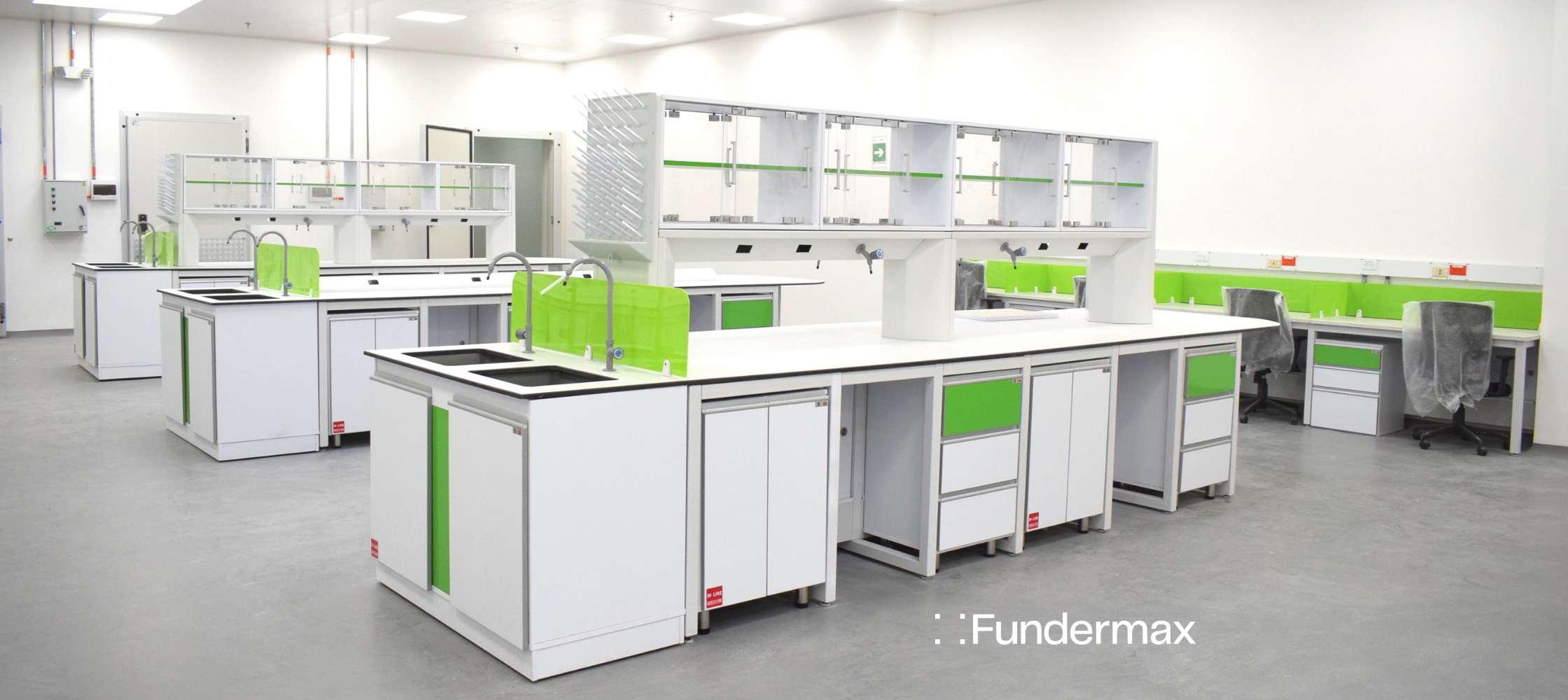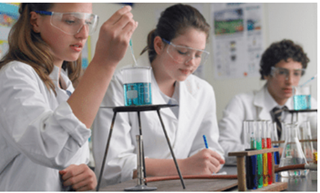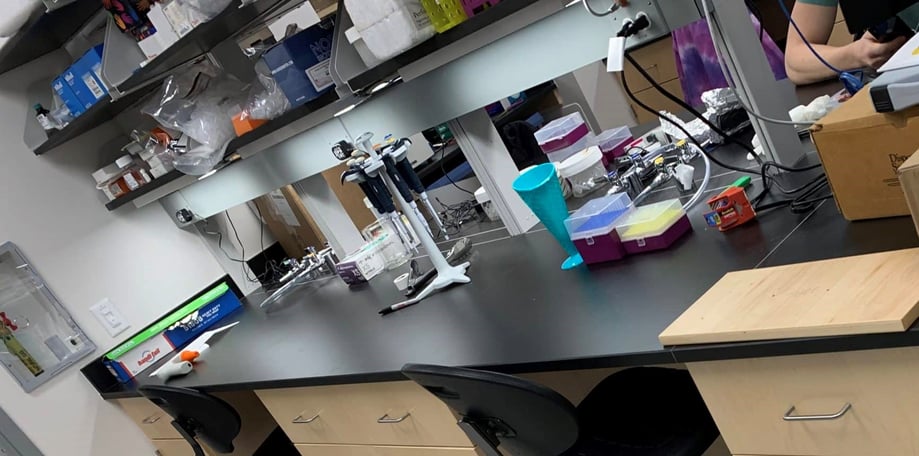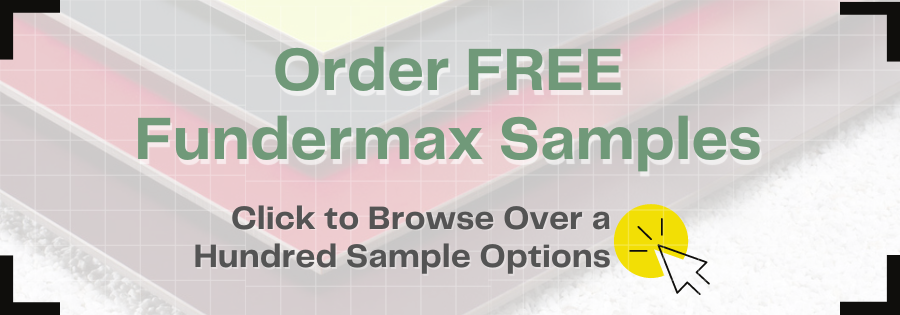
Can HPL Work Surfaces Withstand Heat?
| Last updated August 26, 2025
When considering differing materials that are suited for the lab of today (and tomorrow) it is fair to say that there are numerous different requirements. Ultimately, this results in the need for a variety of materials.
In this blog, we focus on one of the most hotly debated topics in labs using heat: can phenolic material be used in labs that use Bunsen burners?
Can Phenolic Material Be Used in Labs Use Bunsen Burners?
Applications involving heat in the lab arise from a wide range of equipment. While the list is not endless, some of the most obvious ones include heat guns, hot plates, and heat blocks through to bench ovens.
With such a wide range of equipment generating heat in order to conduct experiments, accelerate evaporation, or simply dry glassware rapidly - it is no wonder that work surface choice when considering heat resistance is a commonly debated topic.
It is important to remember that many of these experiments should be conducted within the fume hood (due to spark and/or explosive hazards). However, there is, and always will be, a variety of equipment used on the open bench. In addition to heat, there is of course the potential hazard of a naked flame from the Bunsen burner, which, once lit, should never be left unattended!
Using Bunsen Burners

Science is an incredible area of exploration and discovery. K-12 science classes (and college level) are without doubt the largest users of Bunsen burners, conducting a plethora of experiments such as Levitating Flames, Ion Flame Tests, Growling Gummy Bears, Flame resistant paper, and so on.
Yet, it isn’t necessarily the concern of the burner tipping over (although some surfaces can withstand a naked flame) that worries people; it has more to do with the worry of metal tongs used to hold the copper gauze or pick up a porcelain crucible.
The high heat loads the tips of the metal tongs or the vessel held in/over the direct flame, can reach incredibly high temperatures that, without correct due care and attention could potentially damage any surface. Therefore, most surface manufacturers recommend the utilization of porcelain or heat-resistant pads. This will also protect the surface against malicious use.
Consider the enquiring mind… “What will happen if I put pressure on these hot metal tongs onto the surface?”
Safety is of course of paramount importance in the lab and therefore material selection plays a role in minimizing risk. (As too does the types of experiments that can be conducted as well as implementation of safety precautions when heating chemicals and/or substrates).
Furthermore, there are numerous recommendations to not use Bunsen burners (see WCMC EHS (cornell.edu)) however, they are used – and thus the relevance to safety in connection with the work-surface material should not be underestimated.
What To Look For In Heat Resistant Surfaces
The use of any form of heating implemented in labs should raise concern about the longevity of the work surface material used.
Across North America, there is a misconception that lab-grade phenolic (HPL Compact) should be avoided in labs where heat is commonly used. Understandably, some phenolic compact materials do not withstand levels of heat, which is why understanding the surface technologies used and which test data to request (and understand) becomes ever more important.
In addition, frequently the question of open flame usage in labs (commonly across K-12 science classrooms) as detailed above, is quite rightly a concern of many facilities managers and building owners.
So how do you select material that can withstand heat and the rigors of the classroom?
The Importance of Testing
Whether the source is direct or indirect, a number of recommended tests are available that will enable the correct selection. It should be incumbent upon the manufacturer to provide full testing transparency and therefore we strongly urge you to see the independent tests (and results).
With so many different tests, which ones should be considered?
For instance, EN 438-2:16 provides a test for resistance to dry heat. Other tests include dimensional stability under heat (EN 438-2:17), and of course, there is the fire rating system, ASTM E84.
ASTM E84 is the standard test method for surface burning characteristics of interior building materials and is very apt for considering products used within the lab. The test method records the surface burning behavior by determining a flame spread index (FSI) and a smoke-developed index (SDI) enabling the appraisal of a fire hazard or fire risk of materials.
In addition to the FSI and SDI, there is additional pertinent data included in an ASTM E84 report:
-
Time to Ignition
-
Flame Spread Distance vs. Time
-
Maximum Flame Spread Distance
-
Temperature vs. Time
-
Time to Maximum Temperature
-
Smoke Area vs. Time
However, the two key index values, FSI and SDI, are commonly used by architects and designers to help determine the suitability of a product for its intended application. In addition, these are also the most commonly used values to assist in the fire rating classifications as used in the IBC (International Building Code).
SEFA (Scientific Equipment Furniture Association) also highlights a number of tests – such as the Bunsen burner test and Hot Crucible tests.
Other recommended practices highlighted in SEFA 3 include heat distortion testing (ASTM D648, ASTM C484) and Thermal Coefficient of expansion (ASTM D696) – it is certainly sound advice from the association, and comparing results in conjunction with actual usage will aid work surface selection. See more at www.sefalabs.com
What Material is Best Suited for Applications Involving High Heat?
This being said, how do we answer the question "what material is best suited for applications involving high heat?"
It all depends on the applications within your lab environment – unfortunately, there is not a: “one product that meets all requirements.”
For instance – ceramic is particularly good with heat, but on the reverse, it is quite a brittle product and one that is costly to install.
Epoxy performs well with high heat levels (remember the lower the epoxy content the lower the heat resistance) but can be a costly and heavy product to install.
Phenolic and HPL materials provide a degree of heat resistance dependent upon the surface finish. For instance, a melamine surface and EBC will not provide the same level of heat resistance as a double cured polyurethane coating. (Fundermax's Phenolic Panel Laboratory Work Surfaces Finish - RE)

A Heat Resistant Surface Choice
Max Resistance2 material, a lab-grade phenolic manufactured by Fundermax, provides a solid level of heat resistance with no discoloration, blistering, or cracking up to 180oF and for short periods (20 minutes) up to 360oF – therefore the answer lies in the true application need.
Utilization of equipment such as heat blocks that eliminate the need for oil baths (reducing potential hazards such as fires or spills in the lab) and according to some manufacturers are ideal for use on the open bench – in particular, those that also offer active cooling are also another consideration to aid with work surface choice. In addition, the use of ceramic plates/ trivets if known potential heat of an item is likely to be at heat levels of over 400oF.
Surfaces such as the Max Resistance2 can also withstand the naked flame for up to ten seconds – plus being Class A fire rated provides a high level of security in safety concerns within the lab: (Code Compliance & Testing | Fundermax).

